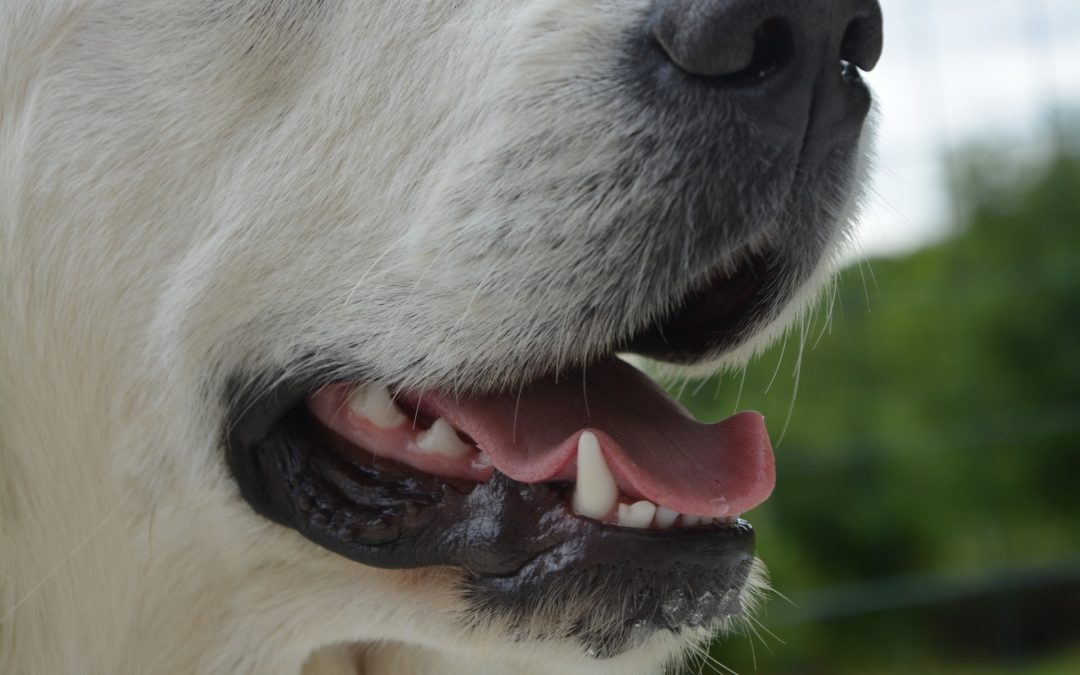In honor of National Pet Dental Health Month, we discussed gum disease in dogs in our last post. As much as 80% of dogs have gum disease by the time they are three years old. It can be a very painful condition and cause serious health complications, but the good news is that it is preventable.
Brushing your dog’s teeth is one of the best things you can do to prevent periodontal disease and tooth loss. Ideally, you should brush his teeth twice a day. However, we know that it can be a difficult—if not an impossible task—so here are some tips from our team at Anasazi Animal Clinic on how to brush your dog’s teeth to make it easier for you and more fun for him.
7 Tips on How to Brush Your Dog’s Teeth
1. Start young.
The earlier you start getting your dog used to brushing, the better. If you adopt your dog as a puppy, that is the best time to start. Having said that, it’s never too late. They say you can’t teach an old dog new tricks, but it’s certainly worth a try no matter what age your dog is. Better late than never!
2. Choose a good environment.
Choose an environment that is calm—free of other pets and children that could be distracting for your dog. You will also want to choose a space that has good lighting. A bathroom with the door closed is a good option. Just make sure you are in a room in which your dog feels comfortable. If he doesn’t like the bathroom, for example, he will be stressed before you even start brushing.
3. Use the right toothbrush.
It is important to purchase a high-quality toothbrush designed for dogs. They are designed with a longer, curved handle that makes it easier to reach the back teeth than with a human toothbrush. A toothbrush with multiple heads will allow you to brush all surfaces of the tooth at once. Make sure it has soft bristles so it does not irritate the gums.
4. Buy toothpaste specifically formulated for dogs.
Only use toothpaste that is developed for dogs. Although using human toothpaste might seem like a good idea that will save money, many of them have ingredients that are toxic to dogs, like xylitol. Additionally, dog toothpastes come in delicious flavors, like chicken, that will make brushing more exciting for him. Do not use anything other than dog toothpaste, including baking soda, which can upset your dog’s GI system.
5. Take it slow.
Here are some steps you can take to train your dog to enjoy, or at least tolerate, having his teeth brushed:
- Touch his gums and teeth without the brush first
- If he doesn’t tolerate this, try putting a little bit of peanut butter on your finger, just to get him used to his teeth being touched
- Next, touch his teeth with the toothbrush
- When he’s ready, let him lick a little bit of the toothpaste off of your finger
You may need to do this a few times just to get him used to the process before you actually begin brushing.
6. Reward with treats.
Make sure to verbally praise and reward each step your dog takes with treats. Start by giving him a treat just for going into the bathroom. Then give him a treat when you touch his mouth and when you take the toothbrush out. This will make the process more fun for your dog and he will develop positive associations with the whole process. Don’t worry about treats negating the brushing. A few won’t counteract the plaque being brushed away.
7. Be patient.
When you feel that your dog is ready for brushing, it is important that you continue to be patient. At first, you may not be able to brush all of your dog’s teeth in one sitting and that’s okay. This doesn’t mean you should give up. Keep trying. But, if the process is just too stressful for both of you, speak with your veterinarian. Some dogs just do not tolerate the process and that doesn’t mean you are a bad owner! However, regular professional dental cleanings are even more important in this case.
Dog Dental Care in Gilbert
In addition to brushing your dog’s teeth regularly, he will need yearly dental checkups and cleanings. We will always perform dental radiographs on your pet while they are under anesthesia for a dental cleaning in order to better evaluate their teeth. Many times the teeth look good on the surface but have issues below the gumline that can only be detected through radiographs.
Our team at Anasazi Animal Clinic is exceptionally skilled in dentistry; Dr. Mafara has worked closely with his mentors at Arizona Veterinary Dental Specialists to ensure we are providing the most innovative services and methods available for your pet. Call us to schedule a dental cleaning or treatment today.
Images used under creative commons license – commercial use (2/3/2021) by JackieLou DL from Pixabay

